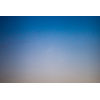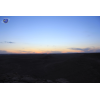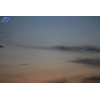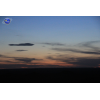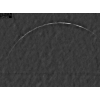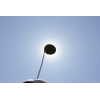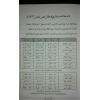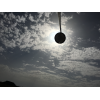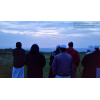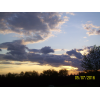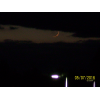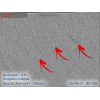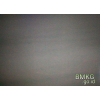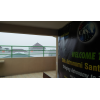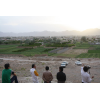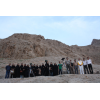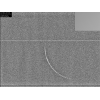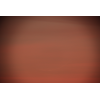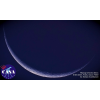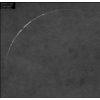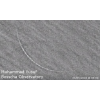نتائج رصد هلال شعبان لعام 1437 هـ
- توقع رؤية هلال أول الشهر (شعبان)
- نتائج تحري هلال أول الشهر (شعبان)
- بداية الشهر الرسمية
- توقع رؤية هلال آخر الشهر (رجب)
- نتائج تحري هلال آخر الشهر (رجب)
توقع رؤية هلال أول الشهر (شعبان)
سيحدث الاقتران المركزي (المحاق المركزي) يوم الجمعة 06 مايو/آيار 2016 الساعة 19:29 بالتوقيت العالمي بمشيئة الله.
إمكانية رؤية الهلال يوم الجمعة 06 مايو/آيار 2016 ويوم السبت 7 مايو/آيار 2016 موضحة في الأشكال التالية باستخدام برنامج المواقيت الدقيقة باعتماد معيار عودة، بحيث:-
- رؤية الهلال مستحيلة من المناطق الواقعة في اللون الأحمر بسبب غروب القمر قبل غروب الشمس أو/و بسبب حصول الاقتران السطحي بعد غروب الشمس.
- رؤية الهلال ممكنة باستخدام التلسكوب فقط من المناطق الواقعة في اللون الأزرق.
- رؤية الهلال ممكنة باستخدام التلسكوب من المناطق الواقعة في اللون الزهري، ومن الممكن رؤية الهلال بالعين المجردة في حالة صفاء الغلاف الجوي التام والرصد من قبل راصد متمرس.
- رؤية الهلال ممكنة بالعين المجردة من المناطق الواقعة في اللون الأخضر.
- رؤية الهلال غير ممكنة بالعين المجردة أو بالتلسكوب من المناطق غير الملونة، على الرغم من غروب القمر بعد غروب الشمس ومن حصول الاقتران السطحي قبل غروب الشمس، وذلك بسبب قلة إضاءة الهلال و/أو بسبب قربه من الأفق.
- يرجى ملاحظة أن الأشكال أدناه تبين إمكانية رؤية الهلال في المناطق الواقعة بين خطي عرض 60 شمالا و60 جنوبا.

السبت 7 مايو/آيار 2016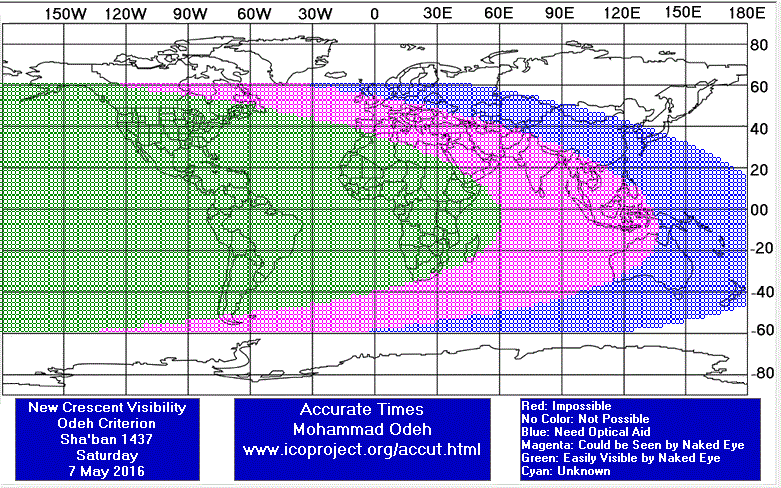
باعتماد التقويم الهجري العالمي المبني على حساب إمكانية رؤية الهلال، فإن بداية الشهر في النطاق الشرقي تكون يوم الأحد 08 مايو/آيار 2016، وبداية الشهر في النطاق الغربي تكون يوم الأحد 08 مايو/آيار 2016. الرجاء ملاحظة أن التقويم الهجري العالمي يعتمد على الحسابات المسبقة (أي لا ينتظر الرصد العملي و رؤية الهلال) وهو يتبنى معياراً معينا لبدء الشهر الهجري الجديد. وقد تتبنى بلدك أو منظمتك معياراً آخر لبدء الشهر، لذا فإننا ننصح وبشدة أن يتم الاطلاع عما جاء في صفحة التقويم الهجري العالمي في موقعنا قبل إصدار أي أحكام .
ستضاف نتائج تحري الهلال وبداية الشهر الرسمية في مختلف الدول الإسلامية في هذه الصفحة إن شاء الله فور استلام نتائج الرصد من قبل أعضاء المشروع الإسلامي لرصد الأهلة.
نتائج تحري هلال أول الشهر (شعبان)
السبت 07 مايو 2016
أستراليا
الجزائر
وقال عضو المشروع السيد حسين الشيخ عيسى "We are 19 people, have attempted to sight the crescent moon (Hilal) of Shaaban 1437, We arrived at our sighting location N’tissa station before sunset. The western horizon was Clear. Using a pair of binoculars (7X50), We are sighted the Crescent with binoculars and naked eye At 19:44 the crescent elevation was about 8 degrees. We left at 19:19 when the moon was still about 3 degrees above the horizon. "
وقال عضو المشروع الدكتور عبد الله أوراغ "تم بفضل الله عز وجل رصد هلال بداية شهر شعبان 1437 هـ من طرف أعضاء "جمعية القطب لعلم الفلك وتقنيات الفضاء" مساء هذا اليوم السبت 07 مايو 2016 م، وتمت أول ملاحظة للهلال على الساعة 19:47 أي بعد "16 دقيقة" من غروب الشمس الذي كان على الساعة 19:31 بالتوقيت المحلي. معلومات الهلال: مكان الرصد: "مرصد القطب" طريق الشيخ عامر - لروي."
ألمانيا
وقال عضو المشروع المهندس مارتن إليسياسر "After seeing the crescent around noon with a good telescope and excellent conditions i could also observe it in the evening after sunset. The sky near the horizon was not good enough to see it with the naked eye but with 10x50 binoculars it was very easy. "
وقال عضو المشروع المهندس مارتن إليسياسر "I first observed the lunar crescent in daytime around 11:30 local. The sky conditions were excellent and i could actually see the crescent visually through an optimized telescope at 30x and 50x. Elongation was around 10° and the crescent was 15.5hours old. The imaging system had no problem at all to capture this. There was a huge amount of pollen flying across the sky, far more visible than the crescent. Around 11:45 local the International Space Station passed in front of the crescent! I had only learned of this 15 minutes before but could still capture a nice video showing the crescent, the ISS and the pollen. https://youtu.be/zmap8GMEbDY I will also try to observe the crescent after sunset later today. "
المجر
المغرب
وقال عضو المشروع الدكتور الحسن طالبي "تعرف معظم مناطق المغرب اضطرابات جوية اليوم 29 رجب، أما الحسابات الفلكية فهي تشير إلى إمكانية رؤية الهلال كما توضح الوثيقة المرفقة، ولحد كتابة هذه الأسطر لم تعلن وزارة الأوقاف عن نتيجة الرؤية الشرعية التي غالبا أنها ستححق في المناطق الشرقية والجنوبية البعية عن الاضطرابات الجوية لأن معطيات الرؤية متوفرة"
المملكة العربية السعودية
وقال عضو المشروع السيد تركي العمري "since early morning me and Dr khaled alzaaq tried to capture the new crescent but clouds are present and haze AOD =0.3 the same condition continue to 4 pm Lt ,all the western horizon were blocked by clouds finally. "
وقال عضو المشروع المهندس مفلح عدنان "The west sky was hazy, even the sun could not be seen by naked eye. "
المملكة المتحدة
وقال عضو المشروع المهندس قمر الدين "We travelled over 30 miles to a location near Thirsk (UK), which is far away from inner city light pollutions and over 1000 feet high with a clear horizon down to ground level. It was the ideal place to sight the crescent moon, which was expected to appear dim and low on the horizon. We were fortunate to have a few highly experience observers from the York Astronomical Society who kindly offered to help locate the moon for us with binoculars/telescopes and a large group of scholars from Batley also came. Unfortunately, the moon was not seen due to heavy clouds, even though the daytime weather was clear."
الولايات المتحدة
وقال عضو المشروع الدكتور جواد تورابنيجاد "I arrived at my sighting location (the Blacksburg Middle School) before sunset (sunset: 8:17 pm EDT). Using a pair of binoculars (7X50), I scanned the partly cloudy and hazy western horizon. My first binocular sighting was at 7:49 pm (about 28 minutes before sunset). Soon, the crescent disappeared behind the clouds. Later, a friend joined me to sight the moon. Our first naked eye sighting was almost an hour later than the initial optical aided sighting, when the moon reappeared in a clearing. The horns were approximately at 2:30 and 6:30 O'clock (2:30;4:30;6:30). We left the area prior to moonset when the moon set behind the clouds covering the lower part of the horizon (moonset: 9:25 pm). "
أندونيسيا
وقال عضو المشروع السيد سوجنج رياضي "The daytime new crescent of Sya'ban 1437 AH was seen by my friend (Muhammad Yusuf) from Bosscha Observatory, Lembang Bandung West Java Indonesia."
وقال عضو المشروع السيد سوجنج رياضي "The new crescent of Sya'ban 1437 AH was not seen from Assalaam Observatory, PPMI Assalaam Pabelan Kartasura Sukoharjo Central Java Indonesia. The sky was totally cloudy and was rainy before sunset. We were the members of CASA, also from SMAN4 Surakarta, Imam Shuhodo Boarding School, Al-Mukmin Ngruki, and Al-Barokah tried to abserve the moon, but no body could see the new crescent of Sya'ban 1437 AH. The team of BMKG at Gowa, reported that the new crescent was seen by telescope."
إيران
وقال عضو المشروع السيد حسين جانقربانی "In the name of God Shaban Crescent Observation Report Astronomy and Geophysics Center of Shahreza – The Crescent Association of Shahreza Report by: Hossein Janghorbani (Najmosepehr-Sadrolmonajemin) – Manager of Shahreza Crescent Association and Red Crescent’s Astronomy and Geophysics Center Date: Saturday, 5/7/2016 Location: Damzad foothills in the East of Shahreza (latitude: 32 00 N, longitude: 51 52 E, elevation: 1825m from sea level, time zone: +4.5 GMT) Equipments: two set of 15*70 binoculars , two set of 20*90 binoculars , one set of 25*100 binoculars, one compass. Atmospheric condition: partly cloudy. Horizon obstacles: about 2° Apparent sunset: --:-- Results: Moon crescent was not seen. Observers : 1.Abdol Reza Gholami 2.Mohmmad Karim Babarabee 3.Daryush Janghorbani 4.Mohammad Hossein Shahcheraghi 5.Reza Moslehi 6.Milad Eslami 7.Sayed Farzad Alavi 8.Mohammad Javad Nikeghbal 9.Ali Janghorbani 10.Hossein Janghorbani 11.Azam Erfan 12.Talaat Taheri 13.Ziba Hafar 14.Masomeh Hafar 15.Shiva Ansaripoor 16.Zahra Farrokhpoor 17.Tayebeh Shafiee 18.Reyhaneh Dadvand 19.Roya Ghermezi 20.Zinat Ghermezi 21.Soheyla Eslami 22.Narges Shahnazari 23.Zahra Fallahi "
تنزانيا
وقال عضو المشروع السيد ظفار شريف "The crescent was earlier seen by binoculars, and later was confirmed by naked eyes at 6.36pm"
تونس
وقال عضو المشروع السيد الطيب الساحلي "إدخال شهر رجب من أصله خاطئ فالصحيح الثابت علميا وشرعيا أن يوم السبت 7 ماي 2016 هو اليوم الموافق 29 شعبان 1437 ------------------------- . كما ترون الرؤية مستحيلة تماما ليلة الجمعة ( عند غروب شمس يوم الخميس 7 أفريل 2016 ) . فيكون يوم السبت 9 أفريل 2016 هو أول رجب وبالتالي فيوم السبت 7 ماي 2016 هو يوم 29 رجب 1437 . والطقس مغيم على كامل البلاد والرؤية مستحيلة فيجب إتمام العدة 30 . فيكون يوم الإثنين هو أول أيام شعبان 1437 https://fbcdn-sphotos-a-a.akamaihd.net/hphotos-ak-xlf1/v/t1.0-9/13124450_900702640042411_7732415563991175495_n.jpg?oh=6ada20a6a294e625ab8c3d9ec214f86c&oe=57DEE7EE&__gda__=1470654097_e4963f3a709b6c06664ec651aeaa26fd"
سريلانكا
وقال عضو المشروع السيد عبد الرحمن رزين "Aalaikum. Today 7-5-2016AD=29-7-1437AH is the sighting day for the month of Shaban.. I was in Mullaitivu N.east of Srilanka.The co-ordination of the location is Lat;9deg18' Lon:80deg48'. Sun set:6.18pm. Moon set:7.01pm.The parameters are Lag=43minutes, R.Azimuth=-03deg07', Altitude=08deg54', Elongation=10deg18'. The prediction of the astronomers=Naked eye sighting will be possible by an experienced observer if the atmospheric conditions are favorable for sighting. The crescent was not sighted in any parts of Srilanka due to unfavorable weather conditions.I organized a sighting group at a place called "panivayal", Depo Road, Mullaitivu. I was there with Moulavi Fareed,Moulavi Adil and Moulavi Mujeeb.We also could not sight it due to unfavorable weather conditions. Hence it was decided to end the proceeding month 30day's and to start the month of Shaban on 9-5-2016 by the president C.G.M.H.C. M.Riyadh (Baari) along with A.C.J.U.and M.R.C.A. The day for "Nisfu Shaban" will fall on 23-5-2016 and the sighting day for the month of Ramadan will fall on Monday 6-6-2016"
عُمان
وقال عضو المشروع الأستاذ دكتور محمد سالم البوسعيدي "The western sky was hazy and partly cloudy. The Crescent was observed by using a CCD camera."
فرنسا
وقال عضو المشروع السيد فريد فوفانا "لمزيد من المعلومات والصور، يرجى زيارة الموقع www.olmf.fr"
ليبيا
وقال عضو المشروع المهندس محمد المغربي "كانت السماء مليئة بالغباء والرياح قوية مما حال دون رؤية الهلال"
ماليزيا
وقال عضو المشروع السيد أونجكو بلخيزان أونج أحمد ثاني "Observer Name: Awangku Bolkhizan Awang Ahmad Thani Month Name: Sha'ban 1437 H. Location: Sungai Lada, Labuan FT, Malaysia. Longitude: 115.17 E. Latitude: 05.30 N. Elevation: 1m. Telescope: Celestron SLT90 f/8 Schmidt Cassegrain. Camera Model: Canon EOS 70D. Shooting Date: 07 July 2016 CE. Shooting Time: 18:45 (UT+8). Shooting Mode: Manual Exposure. Shutter Speed: 1/6 seconds. ISO Speed: 800. Temperature: 29 C. Atmospheric Pressure: 1014 mb. Topocentric Age (At Photo Time): 15 hours and 43 minutes. Geocentric Age (At Photo Time): 14 hours and 54 minutes. Lag Time: 37 minutes."
بداية الشهر الرسمية
السبت 07 مايو 2016
1 . ماليزيا
الأحد 08 مايو 2016
1 . الأردن
2 . الإمارات
3 . البحرين
4 . الجزائر
5 . الكويت
6 . المملكة العربية السعودية
7 . أندونيسيا
8 . تركيا
9 . تنزانيا
10 . عُمان
11 . قطر
12 . ليبيا
13 . مصر
الإثنين 09 مايو 2016
1 . أستراليا
2 . سريلانكا
توقع رؤية هلال آخر الشهر (رجب)
سيحدث الاقتران المركزي (المحاق المركزي) يوم الجمعة 06 مايو/آيار 2016 الساعة 19:29 بالتوقيت العالمي بمشيئة الله.
إمكانية رؤية هلال آخر الشهر يوم الجمعة 06 مايو/آيار 2016 ويوم الخميس 5 مايو/آيار 2016 موضحة في الأشكال التالية باستخدام برنامج المواقيت الدقيقة باعتماد معيار عودة، بحيث:-
- رؤية الهلال مستحيلة من المناطق الواقعة في اللون الأحمر بسبب شروق القمر بعد شروق الشمس أو/و بسبب حصول الاقتران السطحي قبل شروق الشمس.
- رؤية الهلال ممكنة باستخدام التلسكوب فقط من المناطق الواقعة في اللون الأزرق.
- رؤية الهلال ممكنة باستخدام التلسكوب من المناطق الواقعة في اللون الزهري، ومن الممكن رؤية الهلال بالعين المجردة في حالة صفاء الغلاف الجوي التام والرصد من قبل راصد متمرس.
- رؤية الهلال ممكنة بالعين المجردة من المناطق الواقعة في اللون الأخضر.
- رؤية الهلال غير ممكنة بالعين المجردة أو بالتلسكوب من المناطق غير الملونة، على الرغم من شروق القمر قبل شروق الشمس ومن حصول الاقتران السطحي بعد شروق الشمس، وذلك بسبب قلة إضاءة الهلال و/أو بسبب قربه من الأفق.
- يرجى ملاحظة أن الأشكال أدناه تبين إمكانية رؤية الهلال في المناطق الواقعة بين خطي عرض 60 شمالا و60 جنوبا.
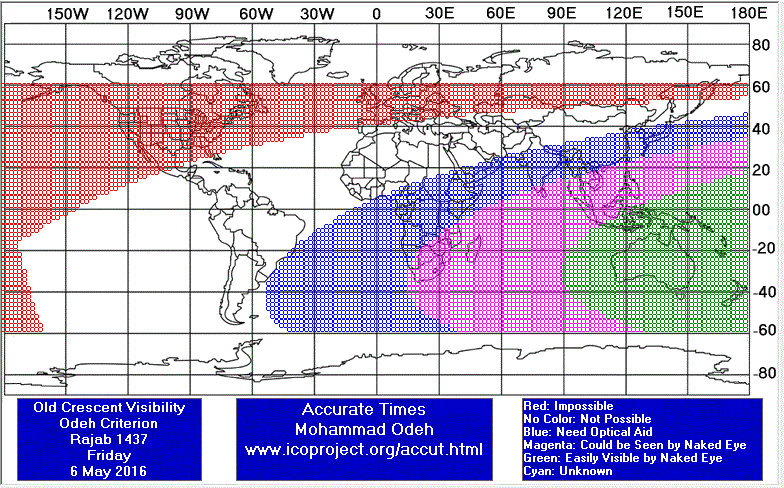
الخميس 5 مايو/آيار 2016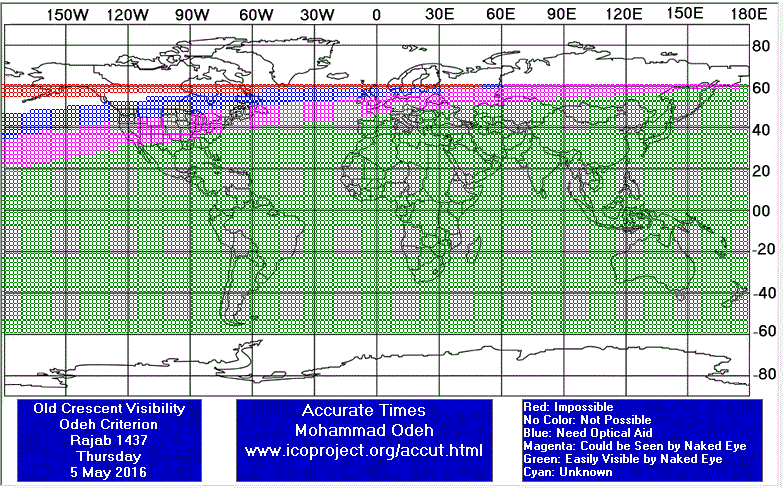
نتائج تحري هلال آخر الشهر (رجب)
الخميس 05 مايو 2016
أندونيسيا
وقال عضو المشروع السيد سوجنج رياضي "The old crescent of Rajab 1437 AH was seen from Assalaam Observatory, The Modern Boarding School of Islam ASSALAAM Pabelan Kartasura Sukoharjo Central Java Indonesia. The east sky was partly cloudy but the moon was easy seen by naked eye by Riztya Ahaddiyanti (East Borneo) and Diana Solicha (Palembang), both are the member of CASA (Club Astronomi Santri Assalaam). The moon also seen from my backyard at Bendo Ketitang Juwiring Klaten."
الجمعة 06 مايو 2016
ألمانيا
وقال عضو المشروع المهندس مارتن إليسياسر "As the moon only rose after sunset i could only observe it during the day. The weather was fine with very blue skies. The imaging system immediately showed a long crescent arc at 8° elongation, some two hours before noon. Due to the stable conditions i could do some experiments with different cameras and processing settings. The weather forcast for tomorrow looks fine, so i hope to be able to observe the moon soon after conjunction."
المملكة العربية السعودية
وقال عضو المشروع السيد تركي العمري "We arrived to alfegra me and khalecd alzaaq arround 2 pm lt clouds are present with strong haze and strong wind, we tried several times but can not see the crescent AOD 540 = 0.2"
أندونيسيا
وقال عضو المشروع السيد سوجنج رياضي "The old daytime crescent of Rajab 1437 AH was seen by my friend (Muhammad Yusuf) from Bosscha Observatory, Lembang Bandung West Java Indonesia."
وقال عضو المشروع السيد سوجنج رياضي "The old crescent was not seen from Assalaam Observatory PPMI Assalaam Pabelan Kartasura Sukoharjo Central Java Indonesia, the horizon was cloudy and hazy."
